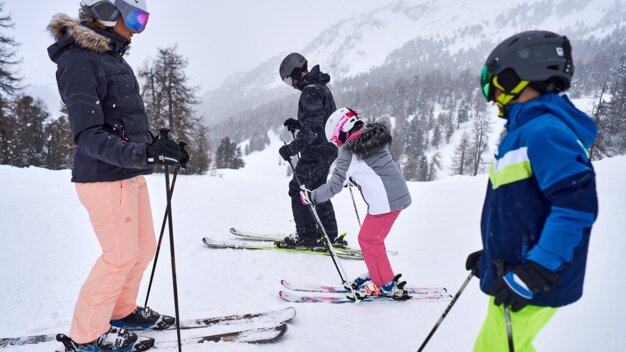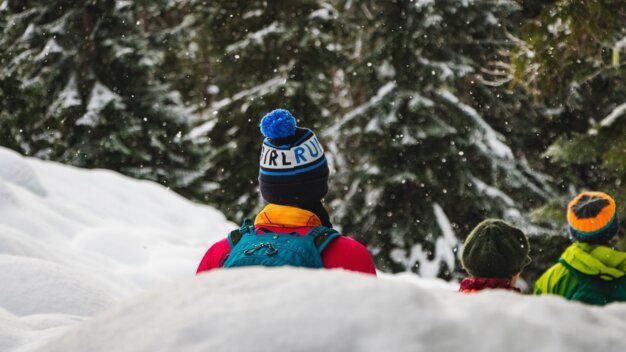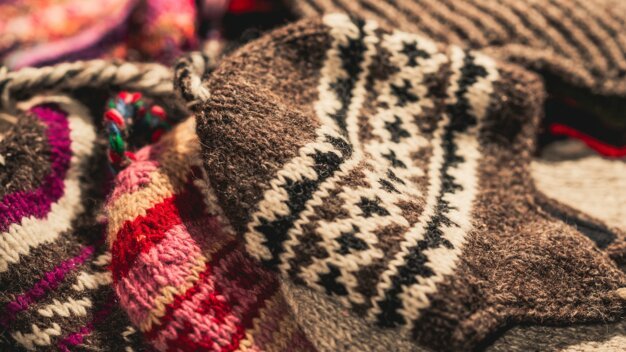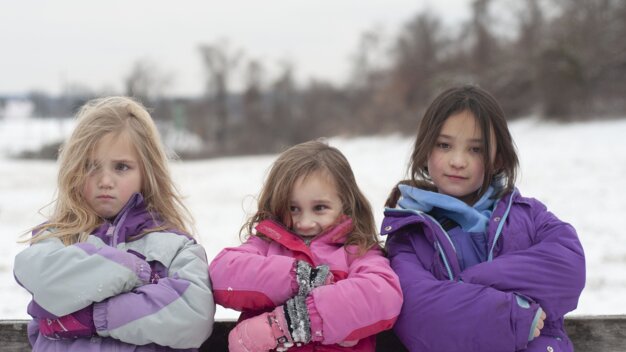
"Mom, I'm cold!", "Dad, my jacket is wet!" What doesn't in the least sound like music to the ears of parents tends to be a daily occurrence on the slopes. But there are a few tricks that can help you make sure that your children's winter clothing is up to scratch!
Onion style
The right skiwear – layer by layer
It's amazing, sometimes children play in the snow for hours without feeling cold. At other times, they shiver after only a few minutes. Don't leave the wellbeing of your children up to chance. Instead, you should give the onion principle a try! Layers make perfect sense, especially when it comes to skiwear, because it's the best way to protect your little ones from getting cold and wet. Another bonus: the layered look offers them the freedom of movement that they need when skiing or playing in the snow.
Why should winter clothing be layered at all? That's easy! The onion principle requires at least three layers of clothing. There is always some air between the thin layers, which gets warmed up by the body. These air pockets then store the heat. Sweat is quickly wicked away, while moisture from the outside can't reach the body. Sounds good, right? We think so too!
We also love the many layers because they are easy to put on and take off when the weather and the temperature change.
3 layers of winter clothing for children
Layer 1: functional underwear
Thermal underwear directly touches your child's skin and should therefore be made of high-quality materials. Many manufacturers use merino wool or a mixture of different synthetic fabrics. It's important that the upper and lower parts are stretchy and can quickly wick sweat away from the body.
Layer 2: insulation
As the name suggests, the middle layer of skiwear helps to keep the body warm. A fleece shirt or fleece jacket is usually the first choice, because the fabric wicks away moisture instead of soaking it up. Tip: The garment should also provide protection against cold draughts, so watch out for unnecessary zips!
Layer 3: weather protection
The outermost layer of the onion look always consists of the ski jacket and ski trousers. They prevent cold air, moisture and wind from reaching the body.
As you can see, it's not all that difficult to dress your kids the onion way!
Ski jacket, ski trousers or ski suit
There are a few rules when it comes to ski clothing for children that differ from those for adults. Since children not only spend a lot of time on skis but also directly in the snow, the fabric must be significantly reinforced at the buttocks and knees. It goes without saying that the garments should be breathable, windproof and moisture-repellent. Some manufacturers work with ventilation openings to allow for better air circulation.
Thermal underwear
Thermal underwear for children in particular has to provide plenty of freedom of movement and must not prevent the little ones from romping around. As a rule of thumb, high-quality ski underwear consists of two layers of fabric: a skin-tight inner layer that absorbs sweat and an outer layer that wicks it away. Cotton is not recommended for children's ski underwear as it soaks up sweat and doesn't release it again. This can lead to chafing!
Ski socks
Sensitive children's feet need ski socks that protect them from pressure marks and blisters! That's why children's ski socks, just like the ski socks for Mum and Dad, are reinforced in certain areas such as the shins. This reduces the pressure of the ski boot in these areas and offers extra protection and comfort.
Gloves
Mittens are ideal for small children, as they are easy to put on and take off and keep their little fingers nice and warm. However, older children should wear gloves – because this gives them a lot more control over their ski poles. Turning and gripping the poles simply works much better if young skiers can move their fingers freely.
Hat
Many ski helmets for children come with an extra hat to protect their heads from wind and weather. A thin hat under the helmet is highly recommended. However, do not use thick, knitted models with bobbles or ears, as these can cause pressure marks and start to hurt!
Ski sweater/fleece jacket
As mentioned above, a fleece jacket comes in handy as an insulating layer. On cold winter days, a microfleece ski sweater is recommended as well. It not only keeps your children warm but also looks stylish. Good to know: For children's ski outfits, hooded fleece jackets are suitable only to a limited extent, as the additional fabric in the ski jacket can feel very constricting.
INTERSPORT Rent Tip
Ski trousers and ski jackets for children, as well as high-quality ski helmets and ski goggles, can be either rented or bought at the INTERSPORT Rent shops directly in the ski resorts!







